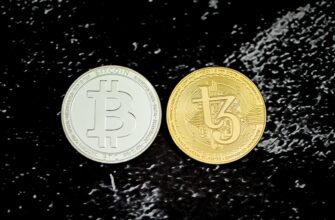🚀 USDT Mixer — Ultimate Privacy, Zero Hassle
Take full control of your USDT TRC20 transfers with our secure mixing service. 🧠
No registration. No personal data. Just clean, private transactions 24/7. 🌐
Transparent fees starting from only 0.5%.
- Understanding Bitcoin Halving: Crypto’s Built-In Scarcity Engine
- The Genesis Cut: 2012’s First Halving
- The 2016 Halving: Maturing Amidst Scaling Debates
- 2020 Halving: Pandemic-Era Defiance
- Anticipating the 2024 Halving
- Economic Impact of Halvings: Beyond Price Speculation
- Key Historical Lessons from Bitcoin Halvings
- Bitcoin Halving FAQ
Understanding Bitcoin Halving: Crypto’s Built-In Scarcity Engine
Bitcoin halving is a pre-programmed event hardcoded into Bitcoin’s protocol that slashes mining rewards by 50% approximately every four years. Occurring every 210,000 blocks, this deflationary mechanism ensures Bitcoin’s total supply caps at 21 million coins. By systematically reducing new coin issuance, halvings create artificial scarcity, historically triggering significant market cycles and reinforcing Bitcoin’s “digital gold” narrative. Let’s explore how these pivotal moments have shaped cryptocurrency history.
The Genesis Cut: 2012’s First Halving
On November 28, 2012, at block height 210,000, Bitcoin underwent its inaugural halving. Mining rewards dropped from 50 BTC to 25 BTC per block. Key context:
- Pre-halving price: ~$12
- Market sentiment: Limited mainstream awareness
- Impact: Within 12 months, BTC surged 8,000% to $1,100
This event validated Bitcoin’s economic model, demonstrating how programmed scarcity could drive value appreciation despite skepticism about the nascent technology.
The 2016 Halving: Maturing Amidst Scaling Debates
On July 9, 2016 (block 420,000), rewards halved again to 12.5 BTC. Notable developments:
- Pre-halving price: $650
- Key challenges: Block size debates and scaling solutions
- Post-halving effect: 18-month bull run peaked at $20,000 in December 2017
The halving coincided with growing institutional interest and the ICO boom, cementing Bitcoin’s role as the crypto market bellwether.
2020 Halving: Pandemic-Era Defiance
Amid global lockdowns on May 11, 2020 (block 630,000), rewards fell to 6.25 BTC. Critical factors:
- Pre-halving price: $8,800
- Unique context: Occurred during COVID-19 market crash
- Outcome: Despite volatility, BTC rallied 700% to $69,000 by November 2021
This halving highlighted Bitcoin’s resilience, with unprecedented monetary stimulus fueling its adoption as an inflation hedge.
Anticipating the 2024 Halving
Scheduled for April 2024 (block 840,000), rewards will drop to 3.125 BTC. Market expectations include:
- Potential price volatility around the event
- Increased mining efficiency demands
- Possible acceleration of institutional adoption via spot ETFs
- Enhanced focus on Bitcoin’s store-of-value narrative
Economic Impact of Halvings: Beyond Price Speculation
Halvings trigger complex ecosystem effects:
- Supply shock: Immediate 50% reduction in new BTC issuance
- Mining evolution: Profitability pressures drive hardware upgrades and industry consolidation
- Market psychology: Heightened media attention fuels retail interest
- Network security: Hash rate fluctuations test blockchain robustness
Key Historical Lessons from Bitcoin Halvings
- Past performance ≠ future results: While halvings preceded bull markets, macro conditions heavily influence outcomes
- Diminishing returns: Each halving’s percentage price impact has decreased
- Long-term trend: All halvings ultimately reinforced Bitcoin’s scarcity value
- Miner adaptability: Mining operations consistently evolve to maintain profitability
Bitcoin Halving FAQ
- Why does Bitcoin halving occur?
- To enforce digital scarcity by reducing inflation gradually until all 21 million BTC are mined (around 2140).
- How does halving affect Bitcoin’s price?
- Historically, reduced supply coupled with steady demand created upward pressure, though timing varies significantly.
- Do halvings make mining unprofitable?
- Initially, inefficient miners exit, but rising BTC prices and improved technology typically restore equilibrium.
- What happens after the last Bitcoin is mined?
- Miners will rely solely on transaction fees, incentivizing network security through user payments instead of block rewards.
- How many halvings remain?
- Approximately 30 more halvings will occur before 2140 when Bitcoin reaches its maximum supply.
Bitcoin’s halving history demonstrates the power of predictable, algorithmic monetary policy. While each event creates short-term uncertainty, the recurring 50% supply cuts have consistently underscored Bitcoin’s core value proposition: verifiable digital scarcity in an age of inflationary currencies.
🚀 USDT Mixer — Ultimate Privacy, Zero Hassle
Take full control of your USDT TRC20 transfers with our secure mixing service. 🧠
No registration. No personal data. Just clean, private transactions 24/7. 🌐
Transparent fees starting from only 0.5%.








